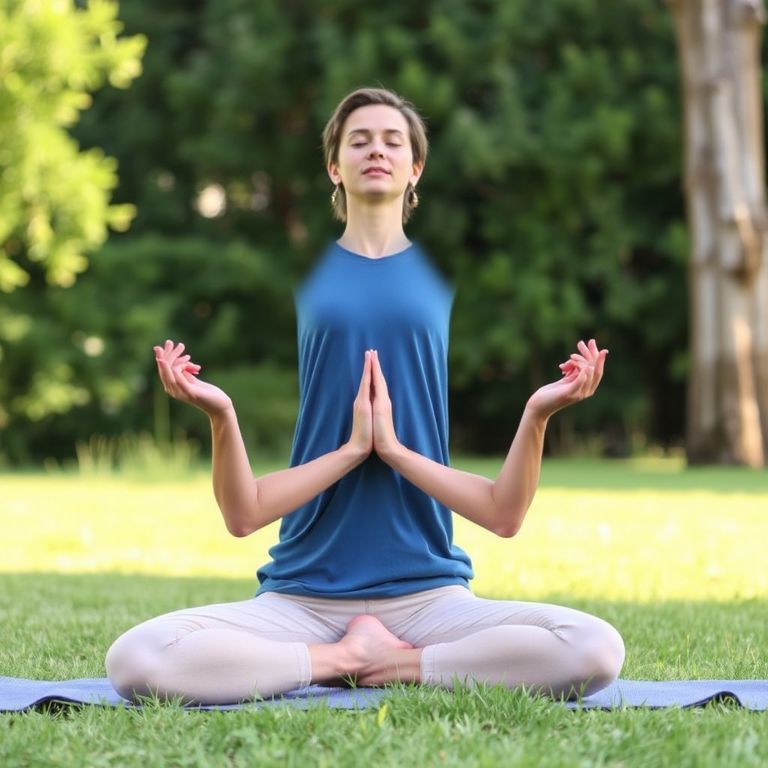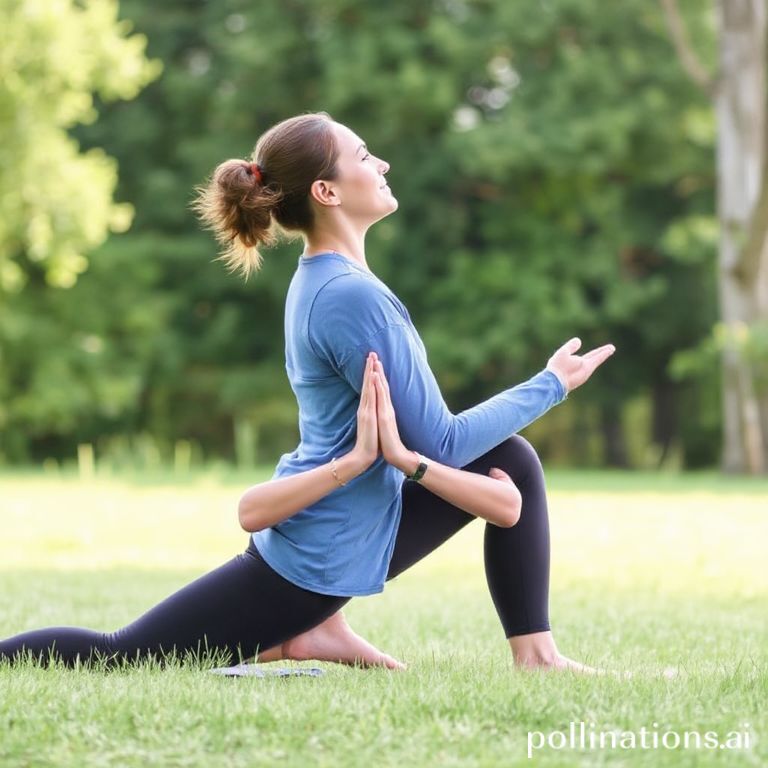Pranayama is a Sanskrit term that refers to the practice of controlling one’s breath. It is an essential aspect of yoga and is believed to have numerous physical and mental benefits.
Pranayama involves various breathing techniques that can help reduce stress, improve lung function, and increase overall well-being. This practice has been used for centuries in traditional Indian medicine and is now gaining popularity in the Western world.
In this article, we will traverse the basics of pranayama and its potential benefits.
What is Pranayama?
1. Definition of Pranayama
Pranayama is a Sanskrit word that is composed of two elements: “Prana,” which means life force or vital energy, and “Ayama,” which means extension or expansion. Pranayama refers to the practice of controlling and regulating the breath to enrich the flow of life force energy throughout the body. It involves various breathing techniques that aim to optimize the intake of oxygen and removal of toxins from the body.
Pranayama techniques often involve conscious inhaling, exhaling, and breath retention. These techniques can be practiced in a seated or lying down position, and they are an integral part of traditional yoga practices. By consciously manipulating the breath, practitioners can experience a wide range of physical, mental, and spiritual benefits.
2. Importance of Pranayama in Yoga
Pranayama plays a crucial role in the practice of yoga. It is considered one of the eight limbs of yoga, as outlined by the sage Patanjali in the Yoga Sutras. By enmeshing Pranayama into their yoga practice, individuals can deepen their awareness, concentration, and connection with their inner self.
Pranayama techniques help to calm the mind, reduce stress and anxiety, and improve overall mental well-being. They promote relaxation and improve respiratory function, enhancing the flow of oxygen to the brain and other vital organs. Pranayama also helps in purifying the nadis, or energy channels, in the body, facilitating the smooth flow of prana.
Practicing Pranayama regularly can have profound effects on physical health as well. It can strengthen the respiratory system, enrich lung capacity, and improve cardiovascular function. The controlled breathing techniques also stimulate the parasympathetic nervous system, leading to a state of deep relaxation and rejuvenation.

Benefits of Pranayama
Pranayama, the practice of controlling the breath, offers numerous benefits for both the body and mind. By integrating pranayama into your daily routine, you can experience a wide range of positive effects.
1. Physical Benefits
- Improved Respiratory Function: Pranayama techniques help expand lung capacity, allowing for deeper and more efficient breathing. This can intensify oxygen intake and circulation, improving overall respiratory health.
- Stress Reduction: Certain pranayama techniques, such as alternate nostril breathing, activate the body’s relaxation response. This can lead to decreased heart rate, lowered blood pressure, and reduced levels of stress hormones.
- Increased Energy: Pranayama helps invigorate the body by increasing the flow of prana, or life force energy. This can result in improved vitality, heightened alertness, and a general sense of well-being.
- Enhanced Digestion: Deep diaphragmatic breathing during pranayama practices massages the internal organs, promoting healthy digestion and optimal nutrient absorption. It can also help alleviate digestive issues such as bloating and constipation.
2. Mental Benefits
- Stress Relief: Pranayama techniques calm the mind and induce a state of relaxation, making them effective tools for managing stress and anxiety. Regular practice can improve mental clarity, focus, and emotional stability.
- Improved Sleep Quality: Pranayama exercises, particularly those that involve extended exhalations, activate the parasympathetic nervous system, promoting deep relaxation and better sleep patterns.
- Enhanced Concentration: By regulating the breath, pranayama cultivates mindfulness and trains the mind to stay focused. This can improve concentration, memory, and cognitive abilities.
- Emotional Balance: Pranayama practices help regulate the autonomic nervous system, which plays a crucial role in emotional regulation. They can help reduce feelings of anger, fear, and sadness, promoting emotional balance and well-being.
Different Pranayama Techniques
Anulom Vilom (Alternate Nostril Breathing)
Anulom Vilom is a popular pranayama technique that involves alternate nostril breathing. It is a simple yet powerful breathing exercise that helps calm the mind, balance energy, and improve overall well-being. To practice Anulom Vilom, sit in a comfortable position and close your eyes. Use your right thumb to close your right nostril and inhale deeply through your left nostril. Then, close your left nostril with your ring finger and exhale through your right nostril. Repeat this cycle for a few minutes, alternating between inhaling through the left nostril and exhaling through the right nostril.
Kapalabhati (Skull Shining Breath)
Kapalabhati is a dynamic breathing exercise that involves forceful exhalations and passive inhalations. It is known as the “skull shining breath” because it helps cleanse the frontal sinuses and energize the mind. To practice Kapalabhati, sit in a comfortable position with your spine straight. Take a deep breath in, and then forcefully exhale through your nose by contracting your abdominal muscles. Allow the inhalation to happen naturally without any effort. Repeat this cycle for a few rounds, gradually increasing the speed and intensity of the exhalations.
Ujjayi Pranayama (Victorious Breath)
Ujjayi Pranayama is a breathing technique commonly used in yoga practices. It involves deep, slow inhalations and exhalations accompanied by a gentle constriction of the throat. The sound produced during Ujjayi breathing resembles the ocean waves, creating a soothing effect on the mind and body. To practice Ujjayi Pranayama, sit in a comfortable position and relax your body. Inhale deeply through your nose, slightly constricting the back of your throat to create a soft, whispering sound. Exhale slowly through your nose, keeping the throat slightly constricted. Repeat this breathing pattern for several rounds, focusing on the sound and sensation of the breath.
- Anulom Vilom (Alternate Nostril Breathing)
- Kapalabhati (Skull Shining Breath)
- Ujjayi Pranayama (Victorious Breath)
These different pranayama techniques offer various benefits for both the body and mind. Embedding them into your daily routine can help improve respiratory health, increase oxygen circulation, reduce stress, and amplify overall relaxation. Remember to practice pranayama under the guidance of a qualified instructor and listen to your body’s limitations. Regular pranayama practice can lead to a deeper connection with your breath and a greater sense of inner harmony.

How to Practice Pranayama
1. Finding a Comfortable Position
When practicing pranayama, essential to find a comfortable position that allows you to relax and focus on your breath. You can sit cross-legged on a cushion or a yoga mat, or you can sit on a chair with your feet grounded on the floor. The key is to find a position that allows you to sit upright with a straight spine.
2. Breathing Techniques
Pranayama involves various breathing techniques that can help you control and manipulate your breath. One common technique is deep belly breathing, where you inhale deeply through your nose, allowing your belly to expand, and exhale slowly through your mouth. Another technique is alternate nostril breathing, where you use your thumb and ring finger to close one nostril at a time, alternating between each breath.
2.1 Deep Belly Breathing
In deep belly breathing, start by sitting in a comfortable position and placing one hand on your belly. Take a deep breath in through your nose, allowing your belly to expand as you fill your lungs with air. Then, slowly exhale through your mouth, emptying your lungs completely. Repeat this process for a few minutes, focusing on the sensation of your breath moving in and out of your body.
2.2 Alternate Nostril Breathing
To practice alternate nostril breathing, sit in a comfortable position and bring your right hand up to your face. Use your thumb to close your right nostril and inhale deeply through your left nostril. Then, use your ring finger to close your left nostril and exhale through your right nostril. Inhale through your right nostril, close it with your thumb, and exhale through your left nostril. Repeat this pattern for several rounds, focusing on the balance and rhythm of your breath.
3. Duration and Frequency
The duration and frequency of your pranayama practice will depend on your individual needs and goals. It is recommended to start with shorter sessions, such as 5-10 minutes, and gradually increase the duration as you become more comfortable. As for frequency, practicing pranayama daily can provide the most benefits, but even practicing a few times a week can be beneficial for your overall well-being.
| Technique | Description |
|---|---|
| Deep Belly Breathing | A technique where you inhale deeply through your nose, allowing your belly to expand, and exhale slowly through your mouth. |
| Alternate Nostril Breathing | A technique where you use your thumb and ring finger to close one nostril at a time, alternating between each breath. |

Precautions and Considerations
When practicing yoga, it’s important to take certain precautions and considerations to ensure a safe and fulfilling experience. Here are some key points to keep in mind:
1. Consultation with a Yoga Instructor
Before starting any new yoga practice, it is recommended to consult with a certified yoga instructor. They can assess your fitness level and guide you towards the most suitable yoga routine. Additionally, they can provide modifications or alternatives for specific poses if you have any physical limitations or injuries.
2. Listening to Your Body
During practicing yoga, it’s crucial to listen to your body and honor its limits. Each individual is unique, and what works for someone else may not work for you. Pay attention to any discomfort or pain during the practice and modify or skip poses if needed. Pushing yourself too hard can lead to injuries, so always prioritize your well-being.
To further assist you in grasping the importance of precautions and considerations in yoga, here is a table highlighting some key facts:
| Fact | Description |
|---|---|
| 1 | Yoga can improve flexibility and strength. |
| 2 | Certain poses should be avoided during pregnancy. |
| 3 | Yoga can help reduce stress and promote relaxation. |
Read More:
1. Diaphragmatic Mastery: Breathe Life Fully
2. Meditative Mastery: Dive into Breath Awareness